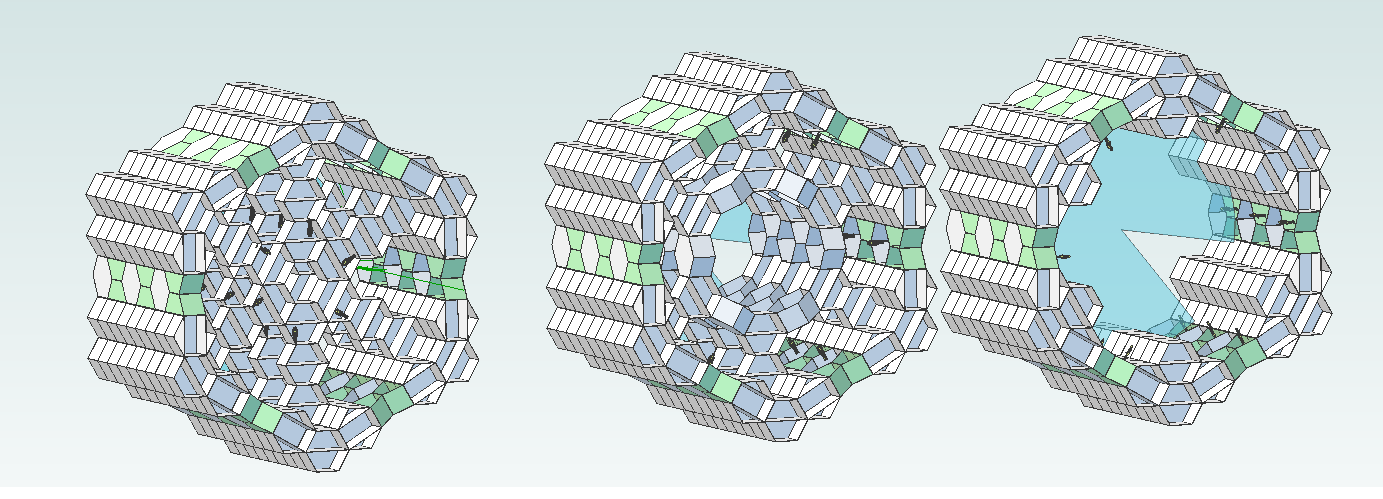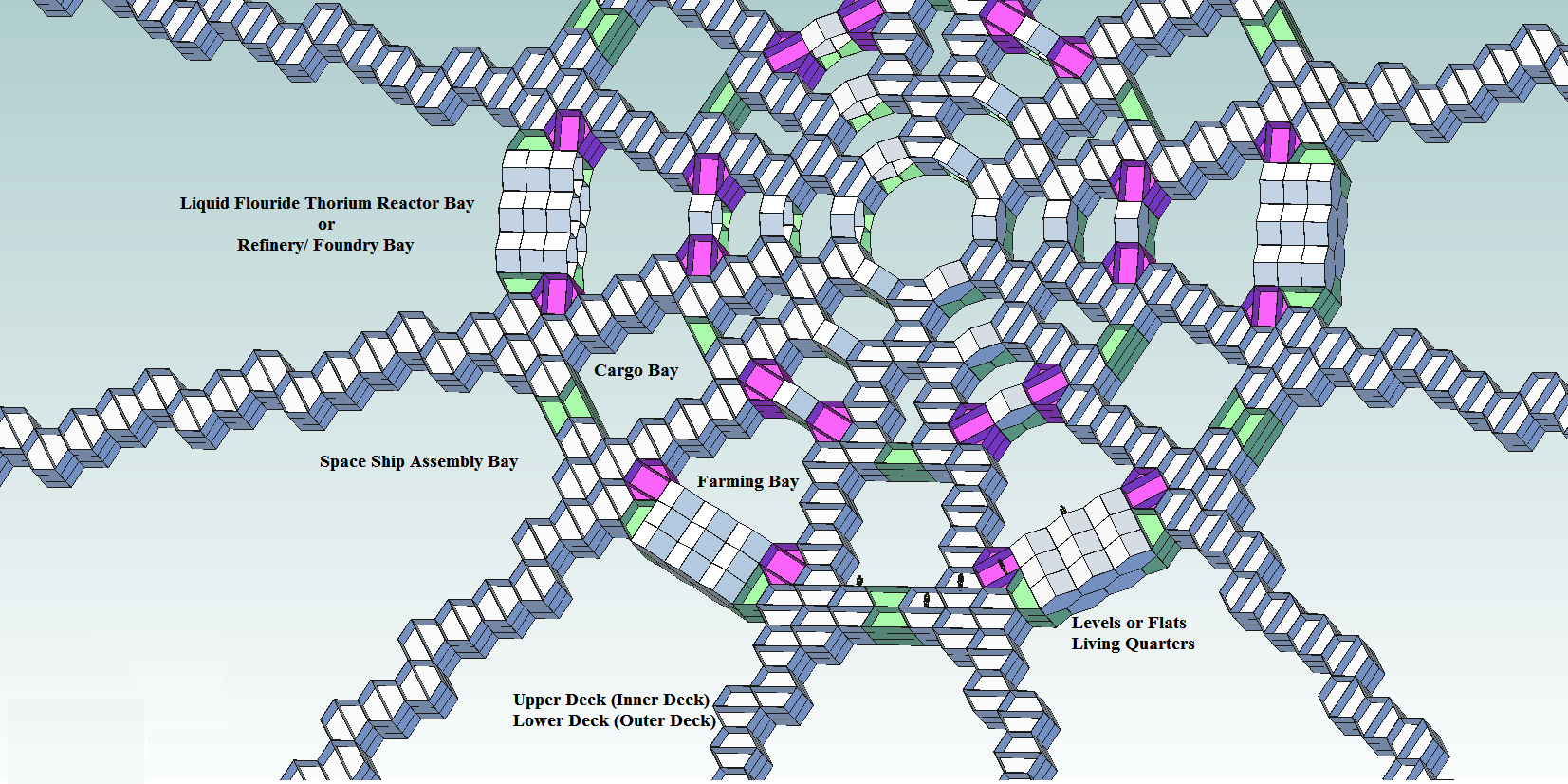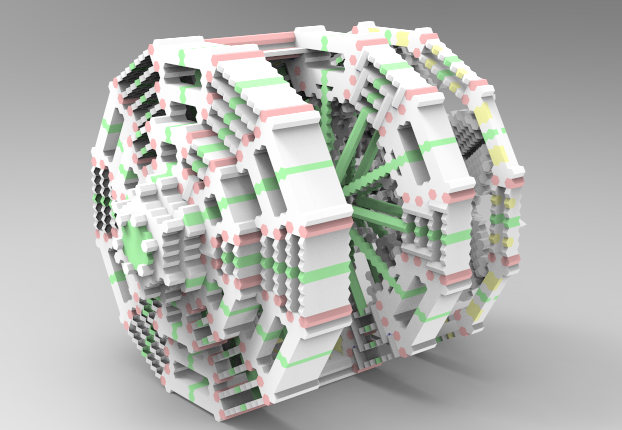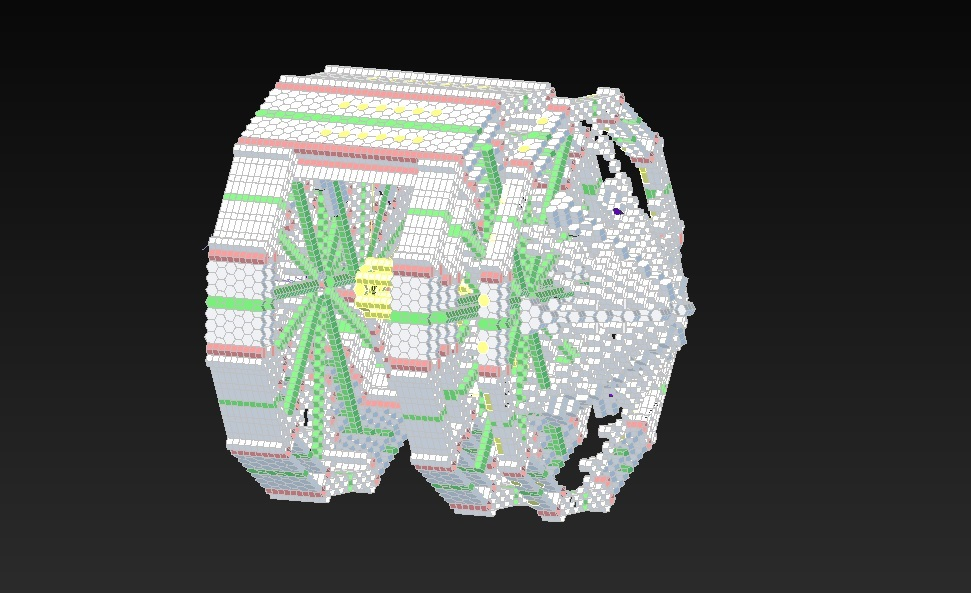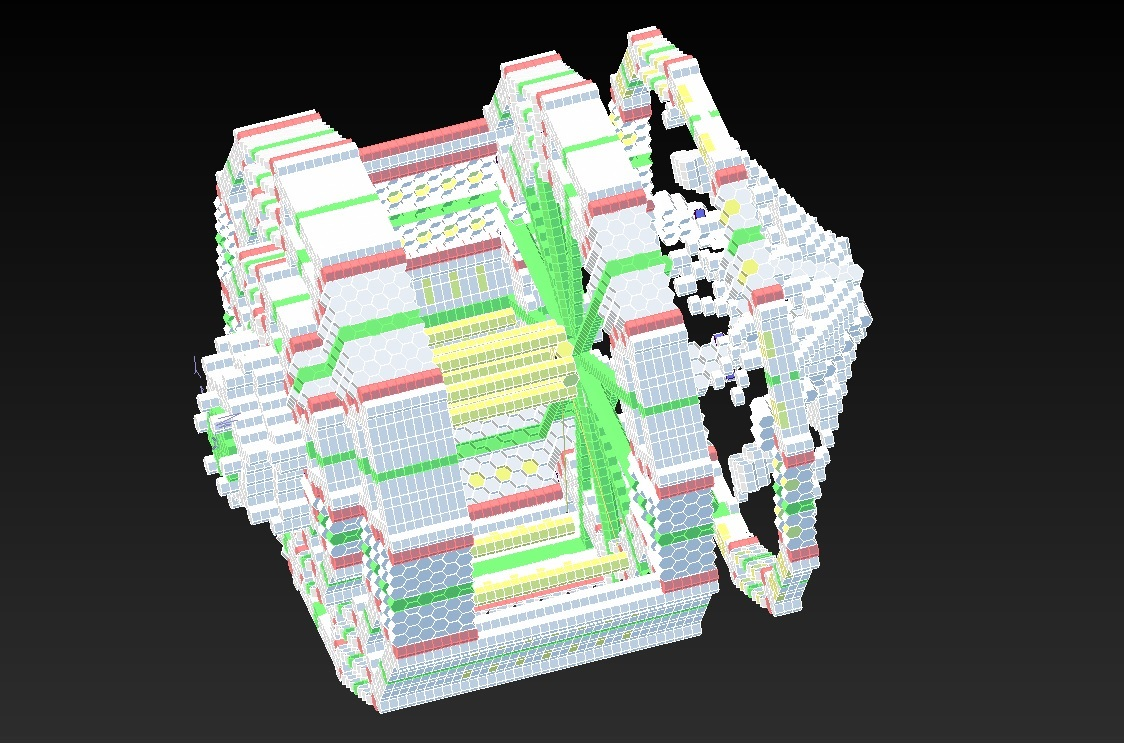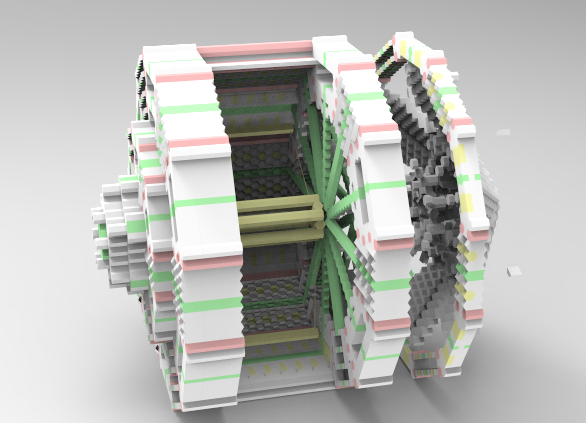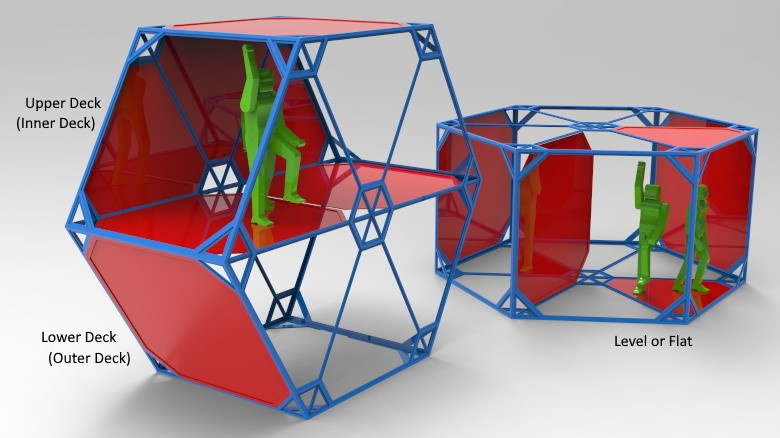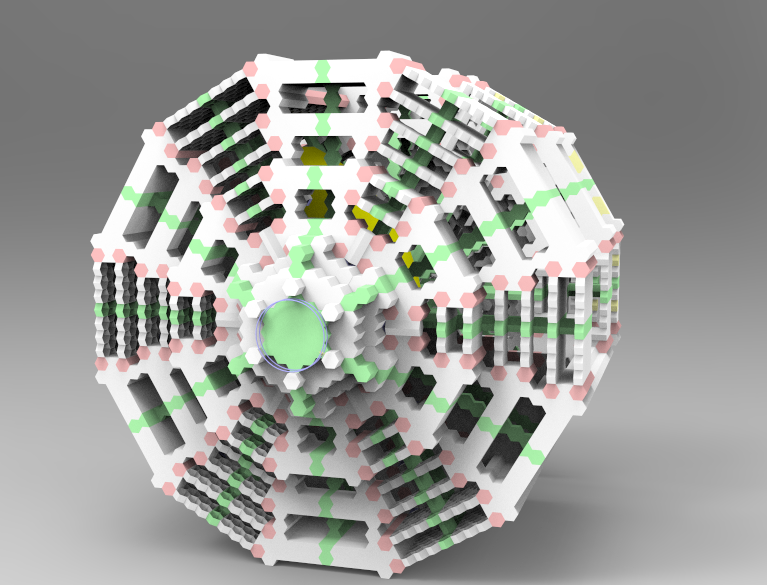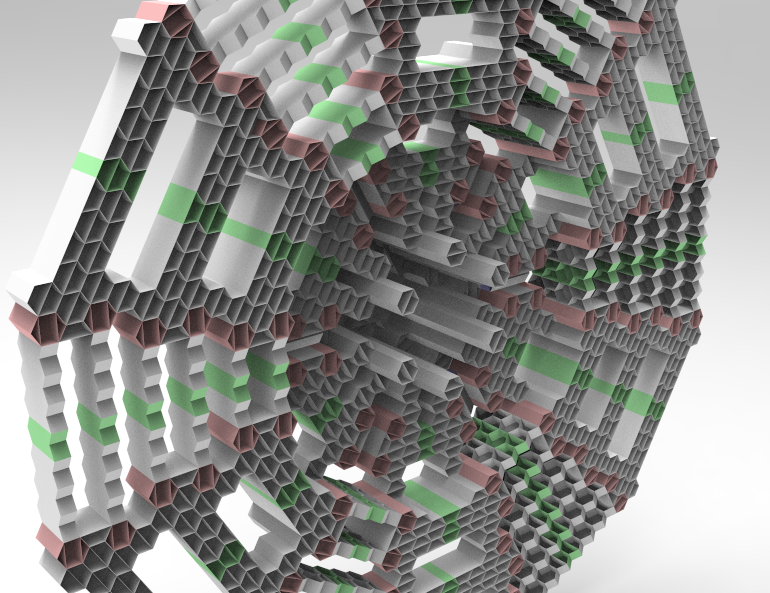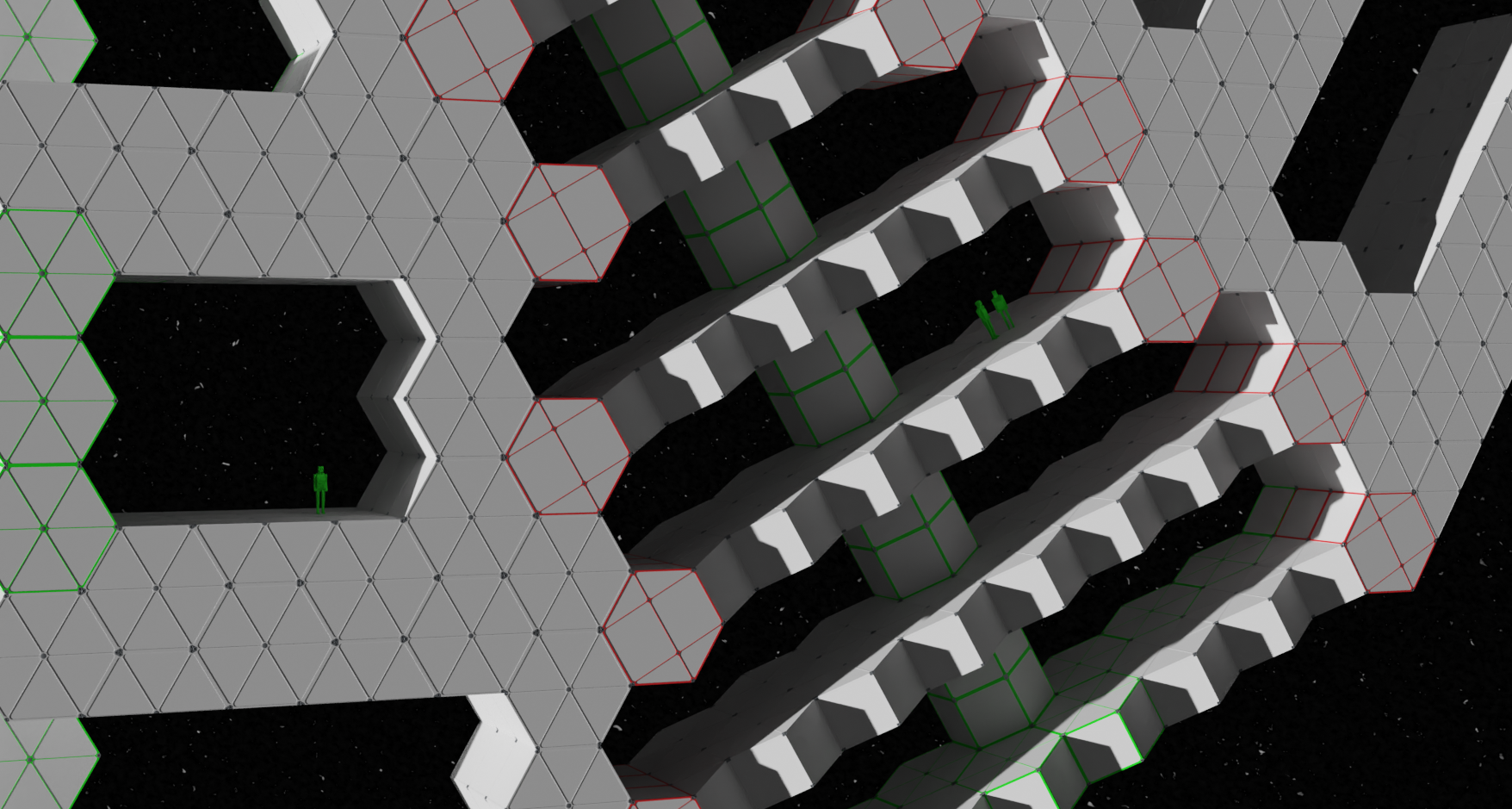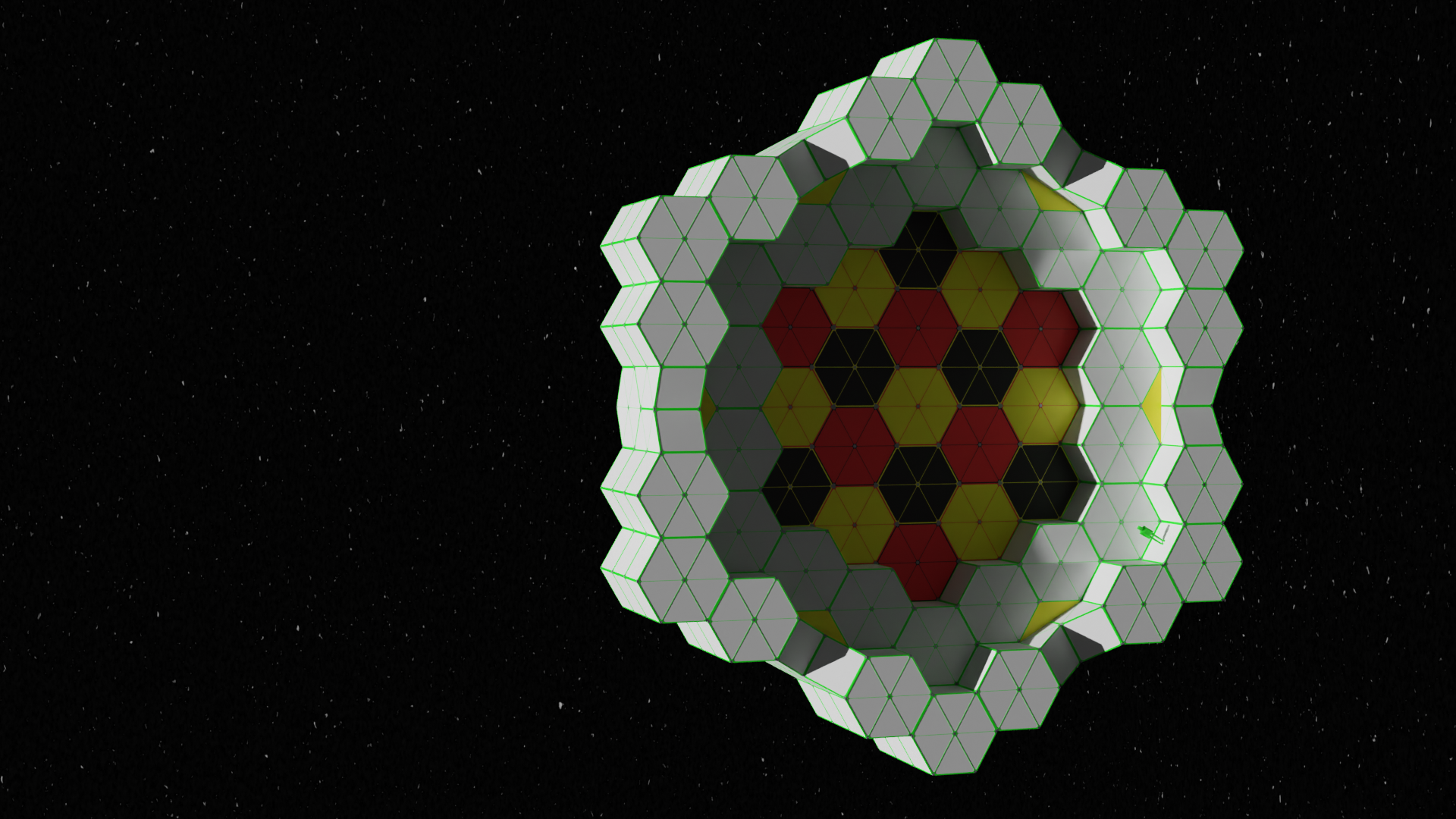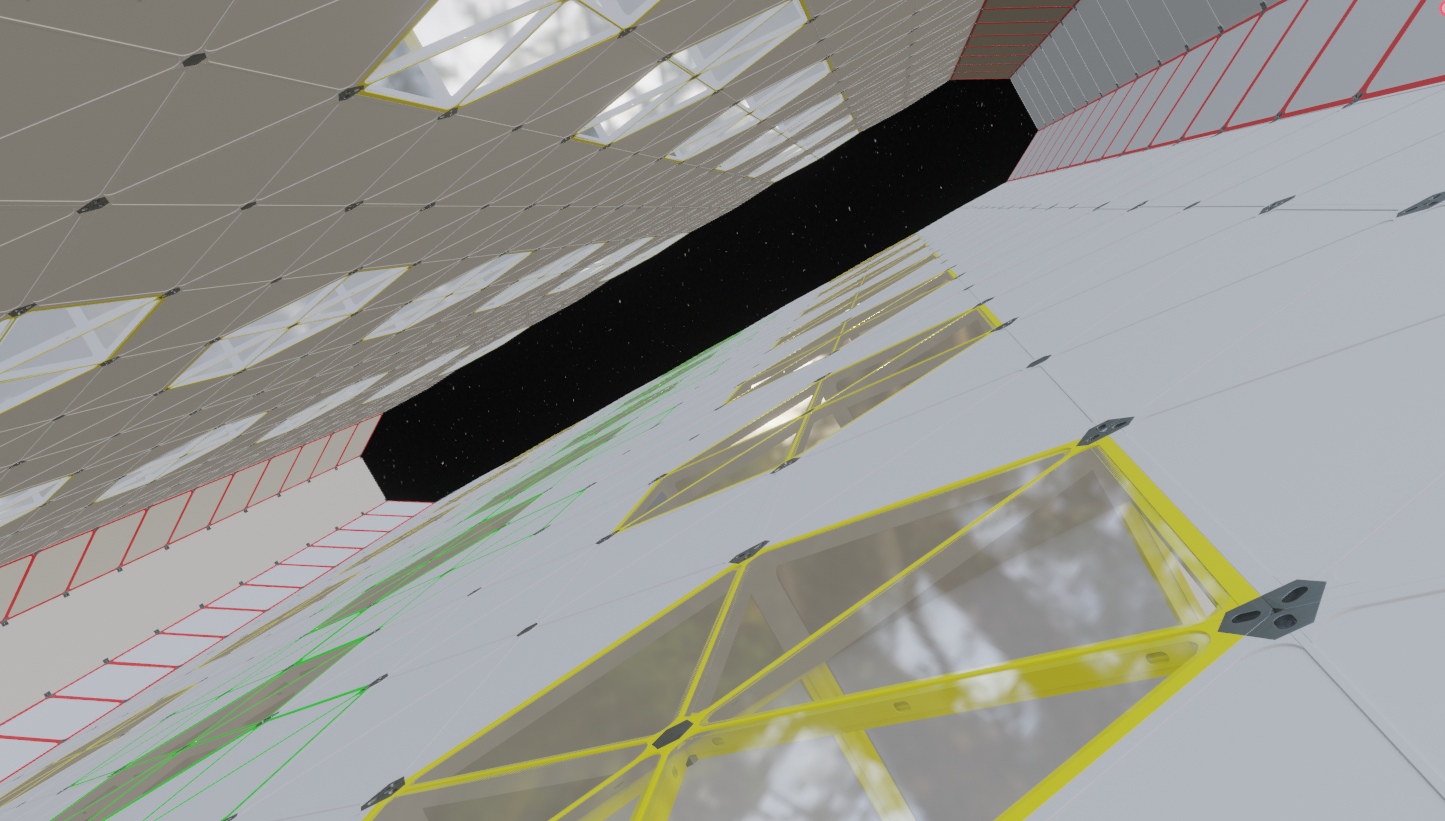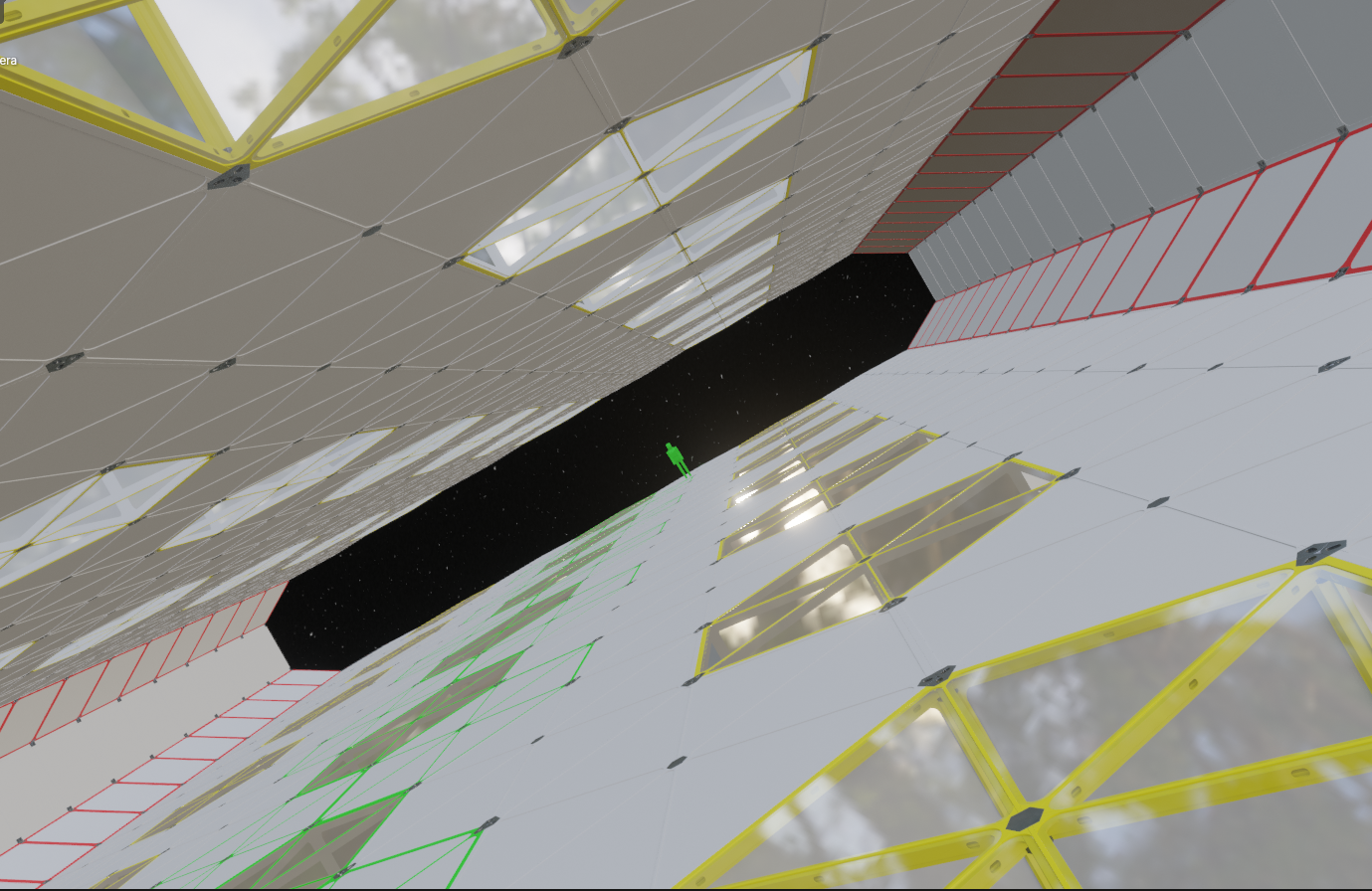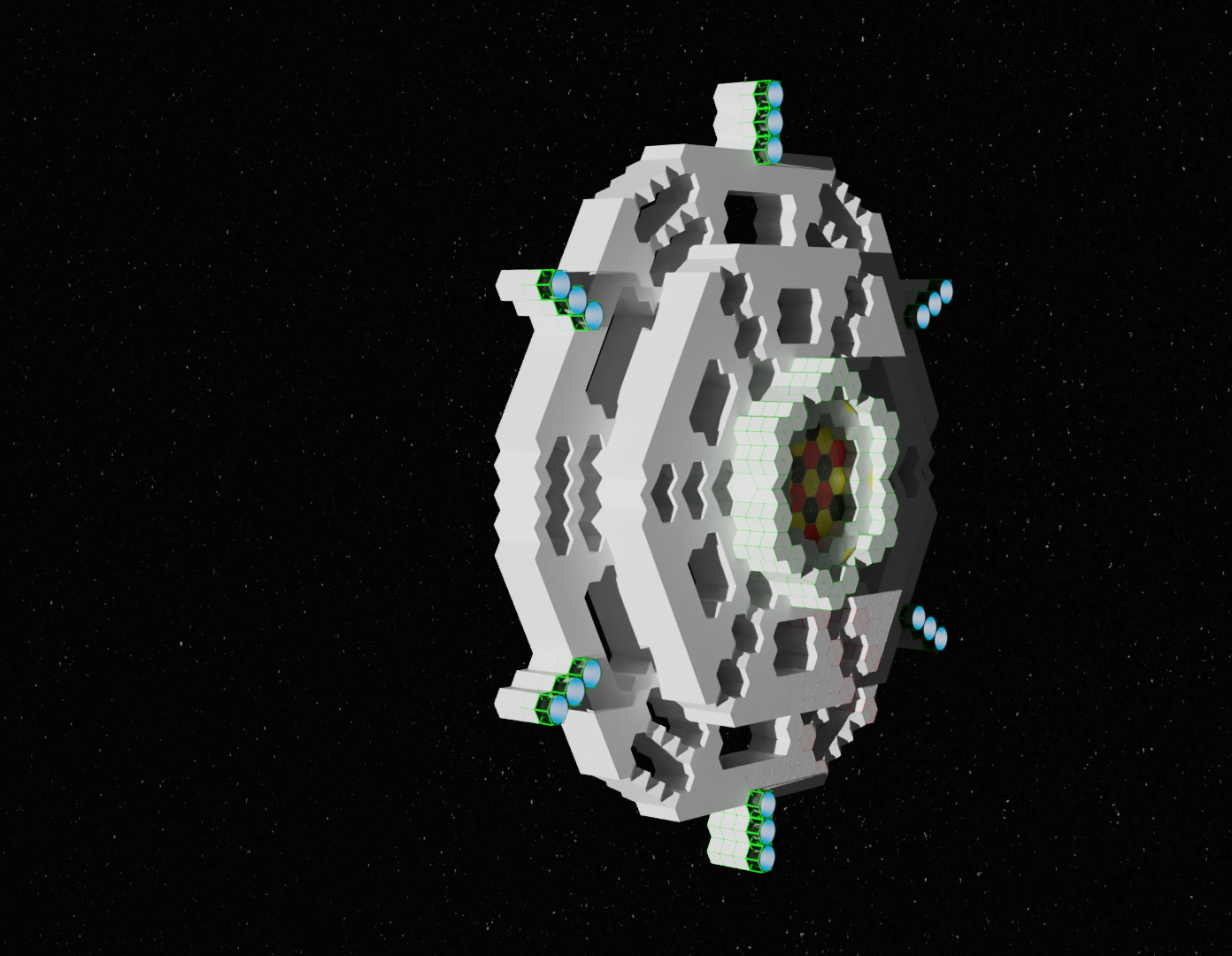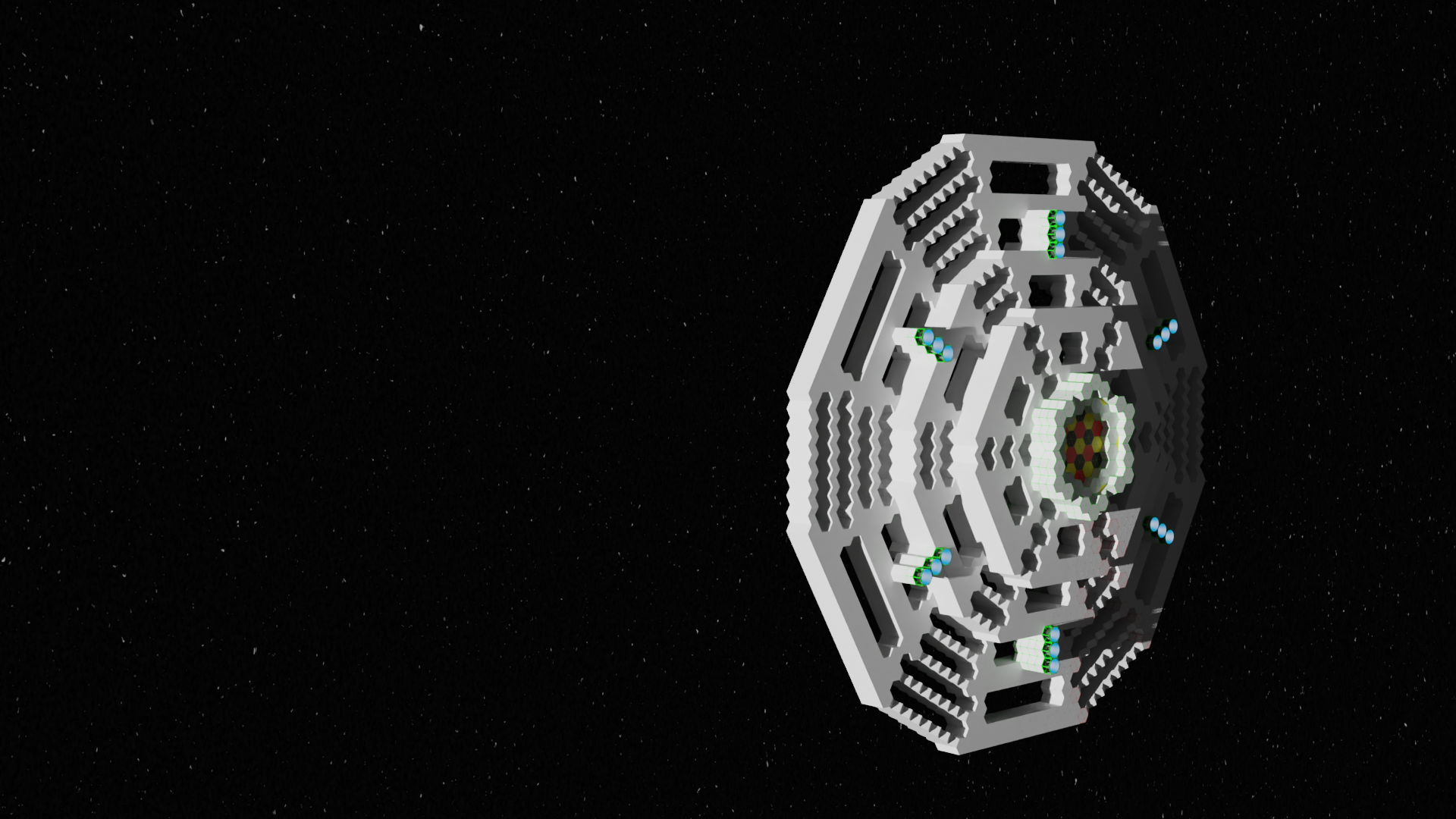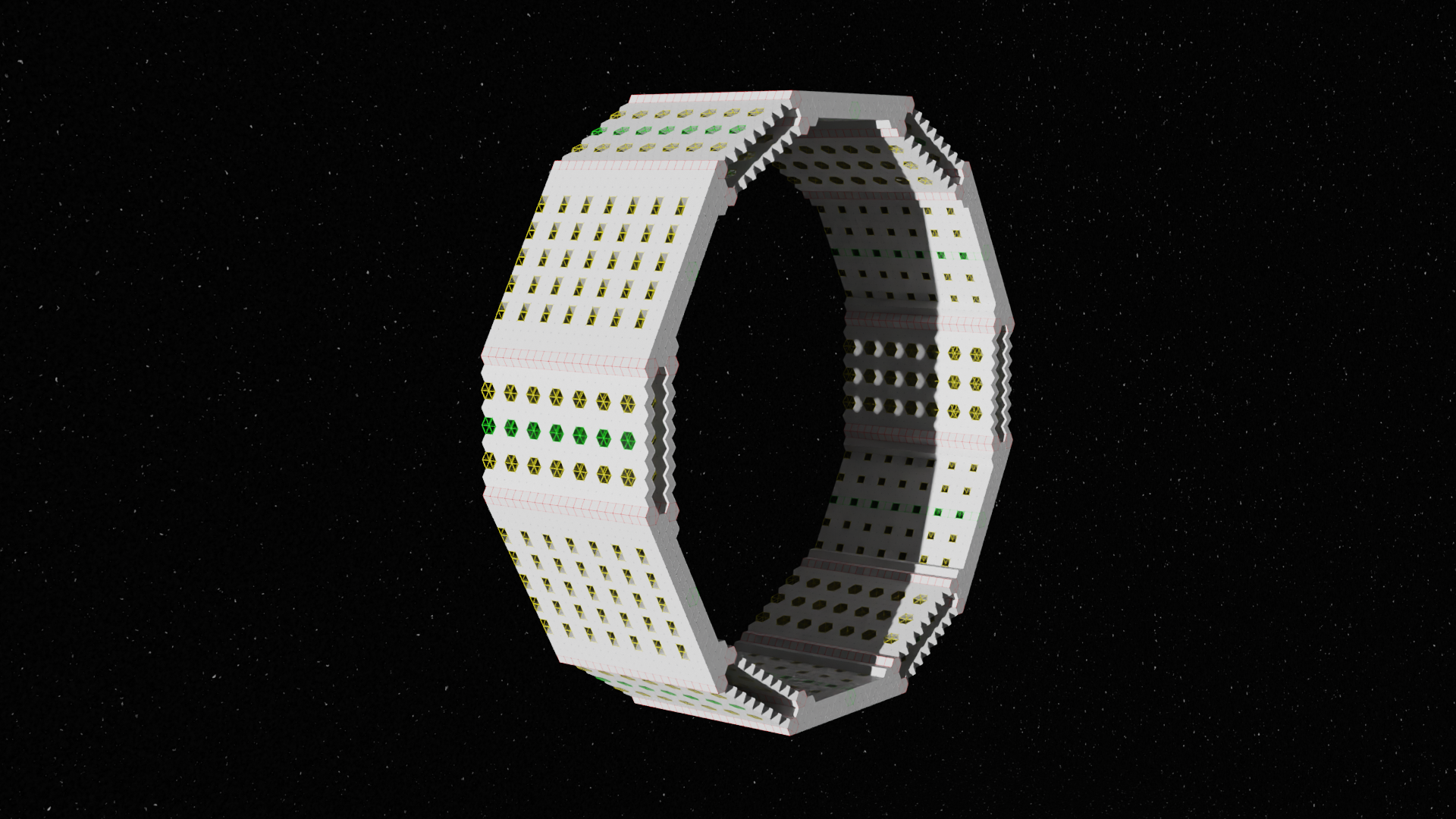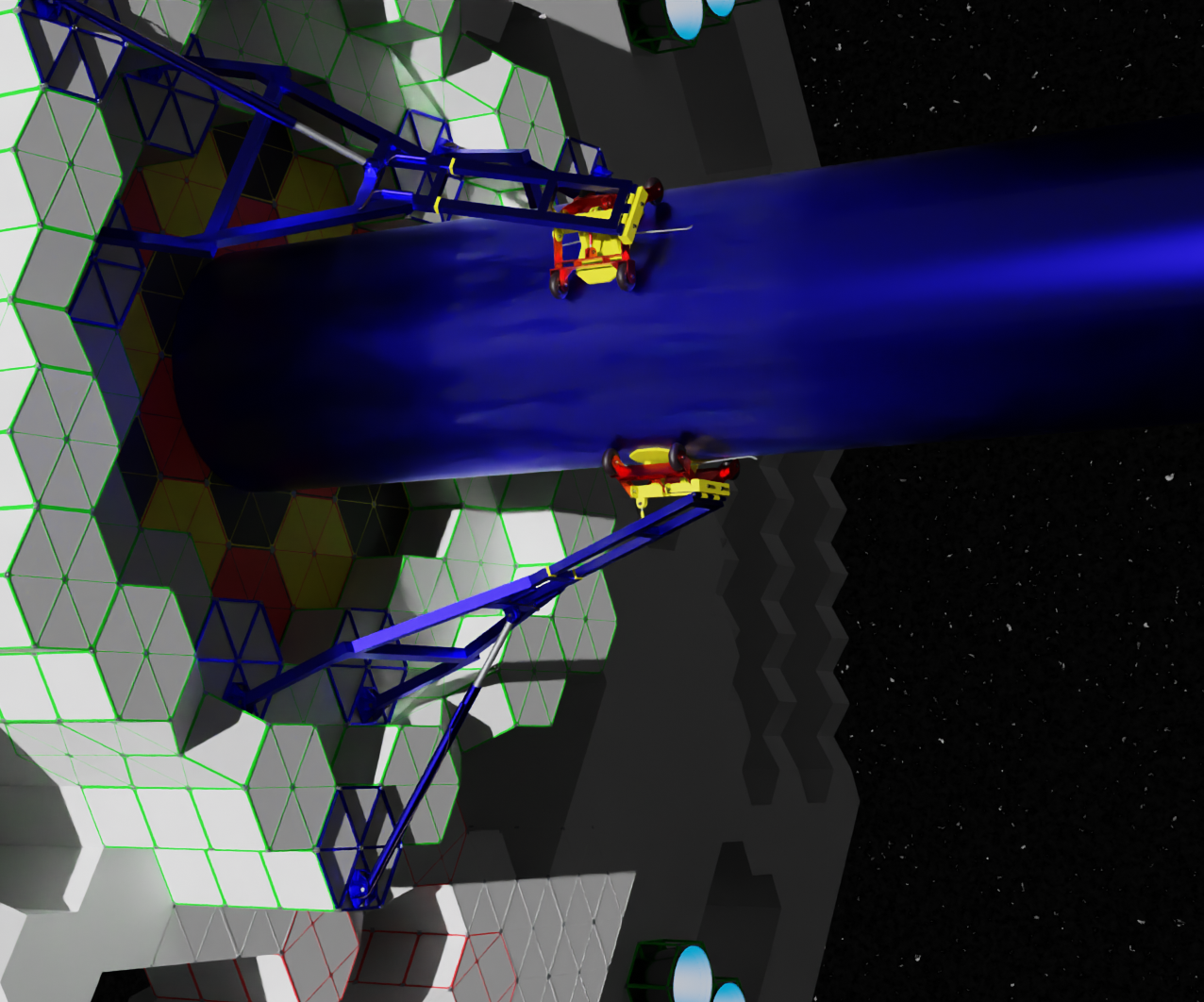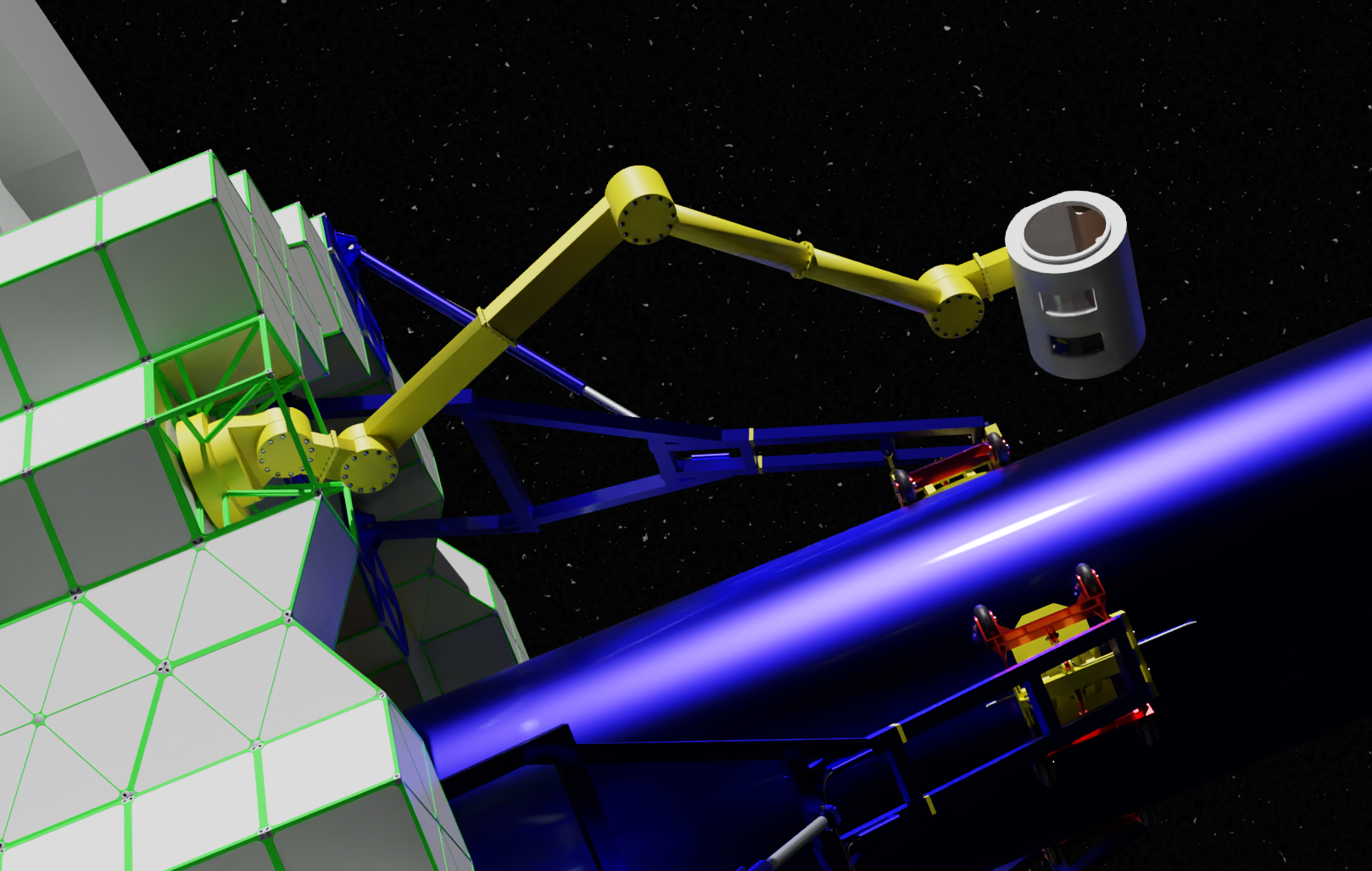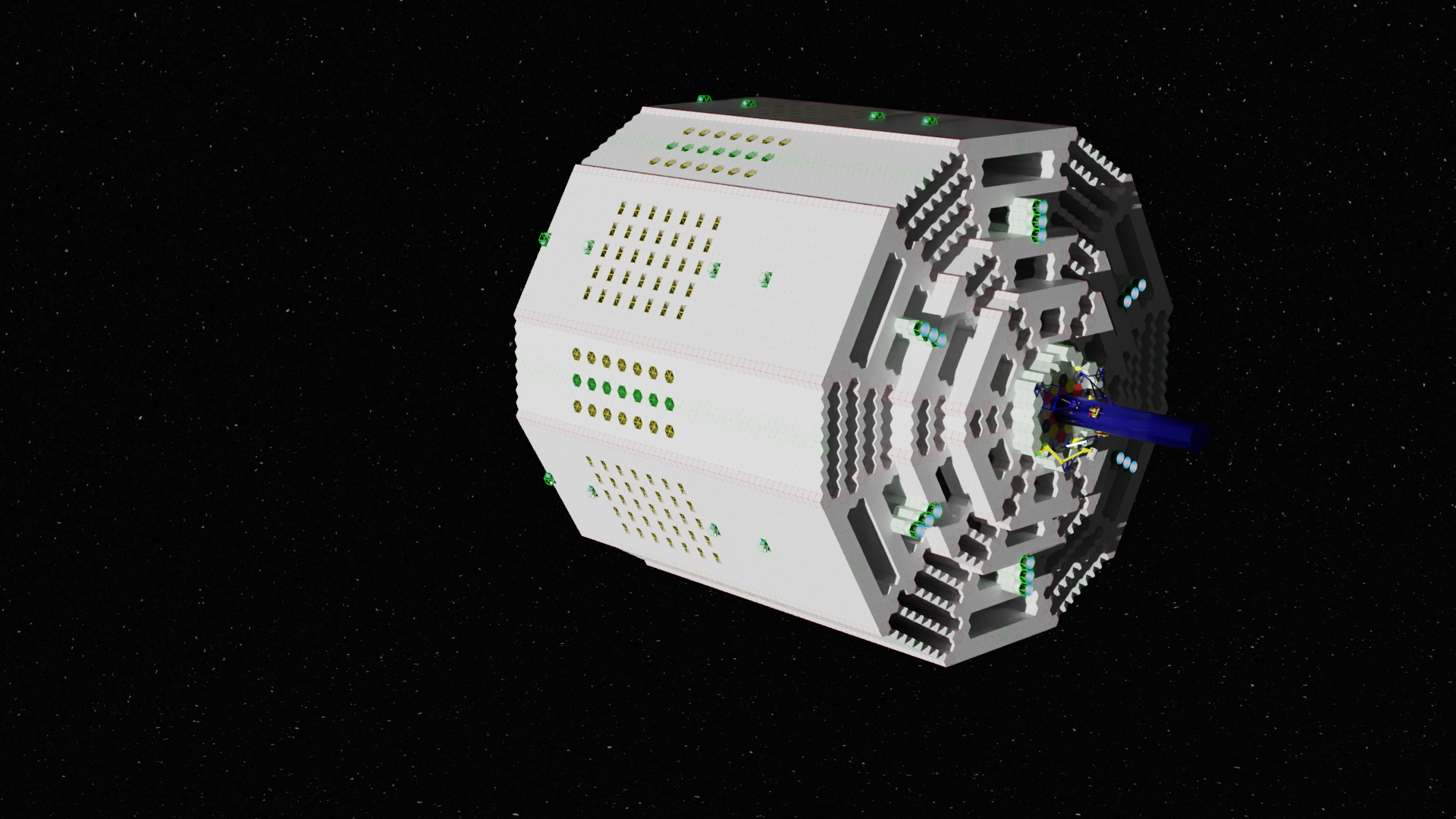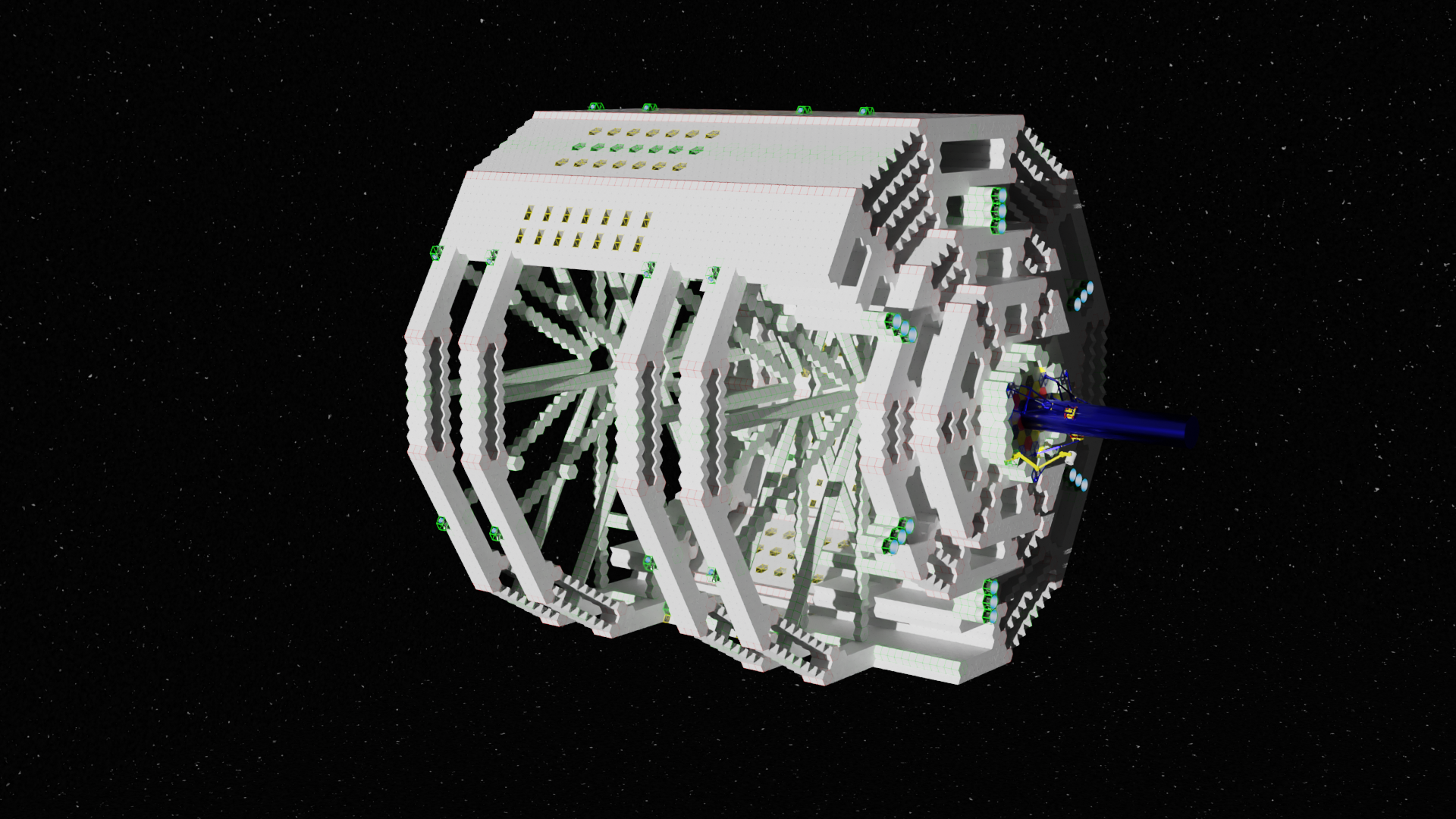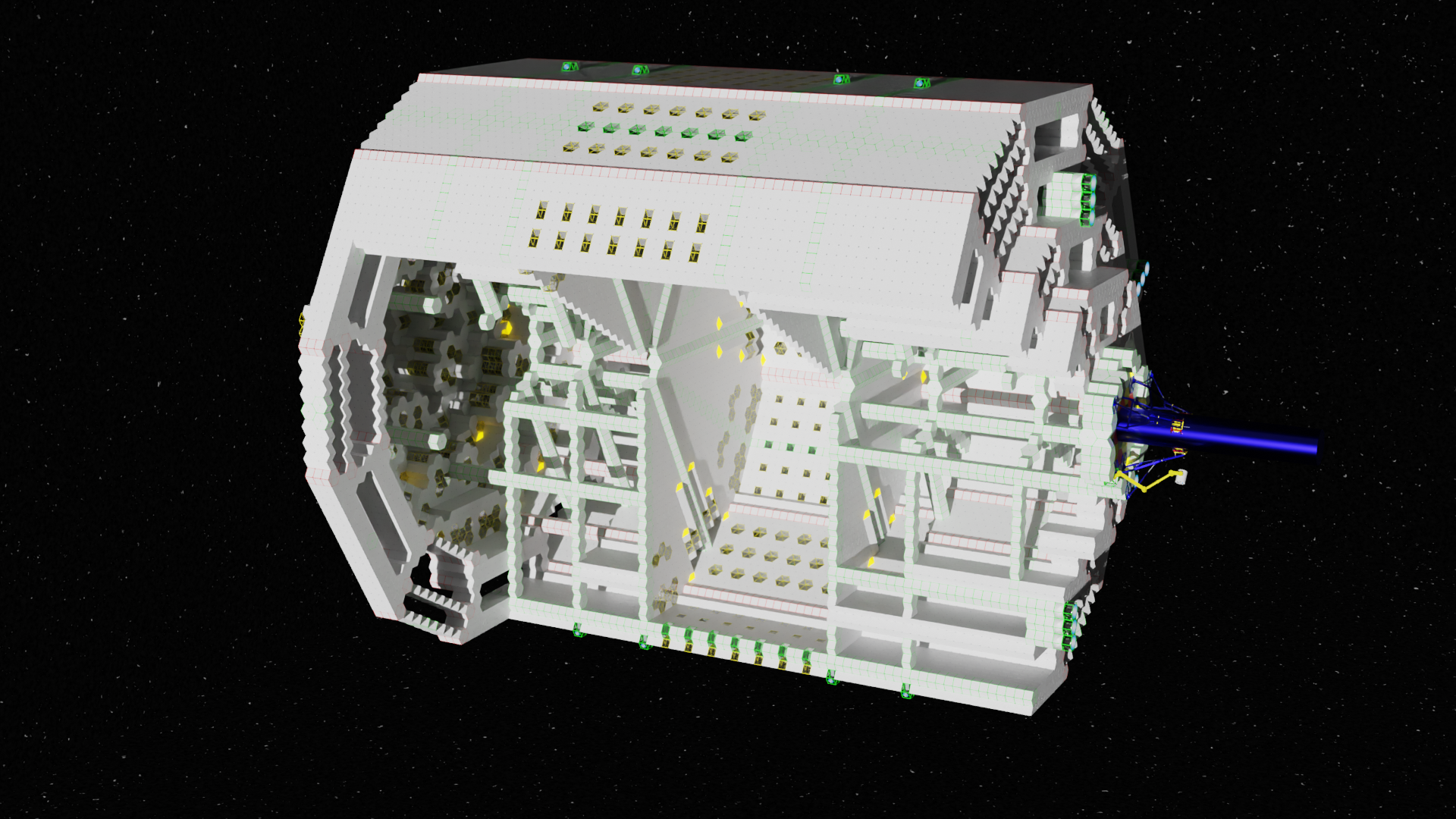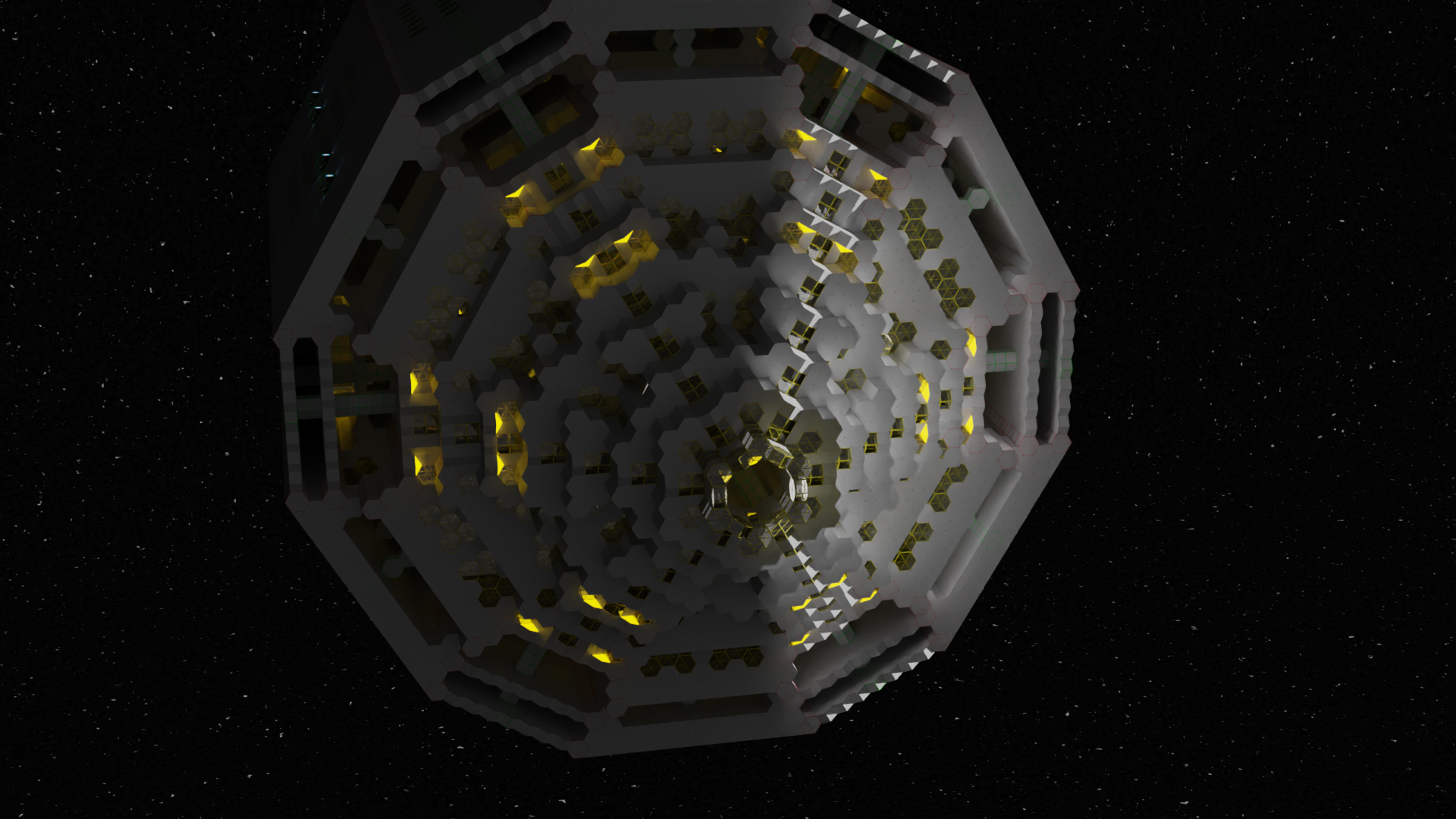Space Stations
My passion for robotics and artificial intelligence would not be complete without my passion for designing space stations.
A hexmod (Hollow hexagon shape) is a standardized cargo container designed to be used for space travel. It has a steel frame and removable panels on each side. The average person can move around inside the cargo container or hexmod comfortably. The panels are pressed flat on one side and contoured on the other side for fitting doors and windows or to hold life support, electronics or utilities. Once the cargo is emptied from the cargo container, the hexmod is cobbled together with other hexmods to form a cylindrical space station. I mentioned cobbled together because the cargo containers will need to be reinforced with welding, girders, expansion bolts, cables, epoxy and who knows what else as the space station grows.
Each space station will continuously grow out of hexmods to be approximately 200 meters in radius and rotate a little over twice per minute (2.11 rpm). This would allow the inside of the outer hull to feel like 1 G.
The image above shows several space stations in the very early stages of construction. These are about 18-20 meters in radius. A useful intermediate size for the space station would be about 80 meters in radius and rotate less than 3 times a minute for the comfort of the inhabitants. Note how the six sided hexmod can be turned into a 12 sided space station and that each space station is habitable during construction. Each hexmod doubles as an escape pod if there is a catastrophic problem on the space station. Once several hexmods surround an open area of space, the area can be enclosed which greatly increases the usable space of the space station for little cost.
Each square side of the hexmod is 240 cm x 240 cm. The interior floor space of each hexmod is about 15 square meters. I am still undecided if more head room is required (Maybe 250 or 260 cm on each side?) Placing two hexmods side-by-side will be the recommended living space per occupant of the space station. This floor space is equivalent to a medium size RV camper. If the occupants are creative in the layout of the space station, they can enclose larger open areas for general use and enjoyment.
Non-engineers can rebuild the space station. If necessary, the whole space station can be disassembled and transported down to the surface of a planet and rebuilt. However, why go to a "gravity well" when it is easier to live on a space station and mine asteroids in zero G?
Still Figuring Out Artificial Gravity
May 11, 2019
A space station that has a radius of 200 meters will need to rotate 2.11 times per minute to feel like 1 G on the inside of the outer hull. If you are returning from mars you might want to start out living on a level that has a radius of 76 meters from the middle of the space station. Mars has 38% of the gravity compared to earth so being on this level will approximate the gravity on mars. A few space stations, like this one, will travel in an orbit between Earth and Mars and will be approximately 179,000,000 km from the Sun. I call this orbit the "Liberty orbit". Having space stations in this orbit will greatly facilitate travel between the two planets. This orbit contains no resources except for sunlight to use as energy. In the future, "Liberty orbit" will be a very important resting point for asteroid miners and space explorers.
I considered having all of the space stations in liberty orbit travel in a retrograde motion compared with the planets. This might help in aligning the space stations with the planets for a shorter travel time. However, one of the resources in outer space is the kinetic energy lost or gained when a space ship lands or takes off from the space station. This energy could be directed to always make the space station go faster in its orbit around the Sun. Each space ship would need to land and take off from the same area of the space station or docking ring. So, having multiple space stations in liberty orbit all traveling faster than the planets (whether in the same motion or retrograde motion), should be investigated for their optimal speeds and directions.
More Space Station Designs
June 11, 2022
Here are some more space station designs if you are interested. The station is divided into sections or rings. The left side or stern of the station has a flat green docking platform with lots of cargo bays and shuttle bays surrounding it. The docking ring would also include the main engines. Next to this ring is the commercial section where the bays are customized for manufacturing and assembly. The greenhouse section is next and is mostly open on the inside to help circulate the air; both for the plants and the space station as a whole. The next section is for utilities such as the lifter reactor, refinery or foundry and has green colored "spokes" to represent where the structural reinforcements such as cables or girders are located. The front of the station or bow is the residential section. It has a honeycomb or pyramidal shape for good views inside and outside the station and for zero-g recreation.
The yellow hexmods represent windows or where a large crescent shaped reflector will be placed. Windows are mostly for the greenhouse and residential sections. The light shines through to the opposite side wall. This means you will be walking next to or around the windows. In the greenhouse section there will be a large crescent shaped light reflector hanging from the "ceiling" that rotates once a day even though the space station will rotate 3 times per minute. This will allow the crops to experience a full day of light and darkness instead of a strobe light effect.
The light red hexmods are hallways and are located in less than prime "equal gravity" areas. Walking down the hallway you will have to lean to the left or right. The prime "equal gravity" areas will be better used for living and working rather than being wasted for hallways. However, if you link all the cargo bays along a wedge of the space station you could create a grand hallway or promenade just like in the movies.
The space station looks bland on the outside because it is made out of empty cargo containers. The main things on the outside will be solar panels, antennas and engines. Spacewalks will be reserved for science equipment and maintenance or on special occasions. Zero-g recreation will be in the residential section. All the aesthetic and architecturally pleasing stuff out of scifi movies will be safely on the inside of the station.
Space Station Designs for 2024
One of the main structural elements of the space station. The green hexmods have girders or cables running through them. They are designed to be stronger than the other hexmods.
The docking platform is yellow, red, and black. This area is where the spaceships land and take off. One of the wedges is used for the command bridge. The rest of the wedges and sections are for commercial use. The thrusters are grouped along the structural green hexmods. Notice how the thrusters fit inside two hexmods and you can add more thrusters if needed. There are no gates (doors, hatches) yet to the cargo bays and shuttle bays. The docking clamps have not been installed yet.
The docking arms allow a visiting space ship to slowly match the rotational spin of the space station before it is clamped into place.
The shuttle arm is much stronger than the docking arms. It will allow astronauts to travel between their space ship and the space station. The shuttle arm will have multiple attachments which will allow efficient loading and unloading of cargo, raw materials and fuel.
The shuttle arm base is securely welded to the hexmod shipping container. The base and container can easily be attached anywhere on the space station with little waste. It needs to reach slightly longer than the docking arms.
Once the space ship is docked in zero-g. You will exit the space ship and enter the shuttle. Notice how the seats are on the ceiling. You will need to buckle up so that when the shuttle arm finishes docking with the space station, you will be oriented correctly with the "gravity" of the spinning space station (Better configurations and travel paths of the shuttle will reduce nausea of the passengers). At a minimum the shuttle needs to rotate 90 degrees to either the space ship or the space station.
The shuttle will continuously be upgraded. It may not need a dedicated shuttle arm. Then the shuttle will become its own little space ship. Then the shuttle will be designed larger. Then the larger shuttle will be called a space ship. And finally, the smaller of these space ships will again be called a shuttle.
The cutaway view shows the commercial section followed by the utilities section, the green house section (with all the windows) and the facilities section.
The utilities section is where the liquid fluoride thorium nuclear reactor will sit as well as the foundry and the refinery. They are closer to the rear of the space station where all the heavy activity takes place.
The facilities section will include the air scrubbers, waste handlers and water recycling equipment. And will be closer to the front of the space station where the residential section will be located (not shown yet).
The green spokes look flimsy now, but will get stronger when all the major equipment is installed.
The Bulk Heads are on each side of the greenhouse section. The atrium has a sky bridge walkway and is located between the facilities section and the residential section at the front of the space station. The residential section has multiple high bays and a 12 sided pyramid structure to provide a space to enjoy zero-g activities. I think most of the residents will want to live in a place with the most gravity with a view of the atrium or the greenhouse.
This is a Solar Class 3 (max .7 G) space station because it is designed to rotate 3 times per minute. It could also be considered a Solar Class 2 (max .31 G) or a Solar Class 1 (max .08 G). However, the rating for this space station uses the maximum gravity it can generate during normal operating rotations. It is designated Solar Class to be deployed an appropriate distance from the sun.
The front of the space station will definitely change its appearance. The picture shows a rough draft of what it might look like. Foundationally, there are more shuttle bays. These shuttle bays are private. The direct center needs to be filled in. The yellow lights are not permanent (they are placeholders to show where a full hexmod or half hexmod doesn't quite fit). The high bays could be used to hold larger space ships or transformed to fit customized living quarters. This area will be developed at the end of the building cycle and will reflect changes in taste and improvements in technology.
Also, each individual hexmod is "modular" and will be designed by its owner to have furniture, appliances and windows. These windows will enrich the overall look to the front of the space station. Most notably, any hexmod that is not a gate or door will have light coming from its windows. I am still working on the gates and doors.
The hexmods will be assembled using "twist locks" in each corner to temporarily hold each one in place until they are welded together. The twist locks stay in place even after the hexmods are welded together for added strength.
The "main" level or deck that everyone would consider to be the "main" level or deck is complicated. The "main" level is inside the hexmods while the "main" deck is outside the hexmods. For example, if I were to create a pond and walking trail it would be in the empty space above an upper deck. To get to this area you would exit from a hallway to an upper deck and then out onto the main deck. This hallway is on the same level where you enter and exit your hexmod living quarters. This is a problem for next year.
